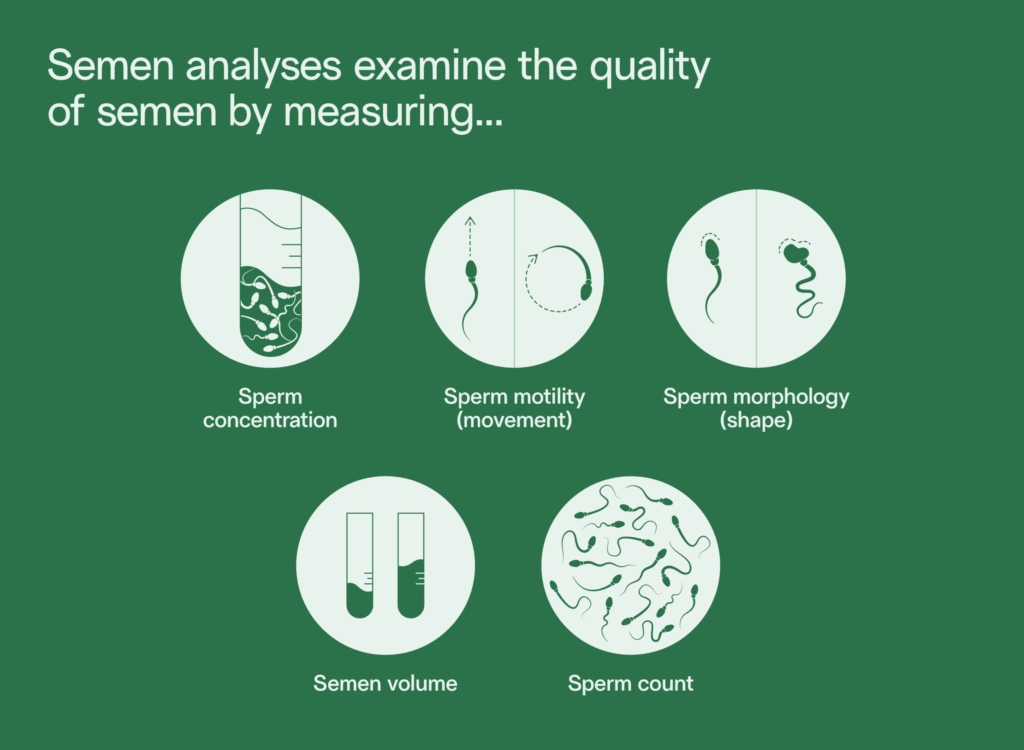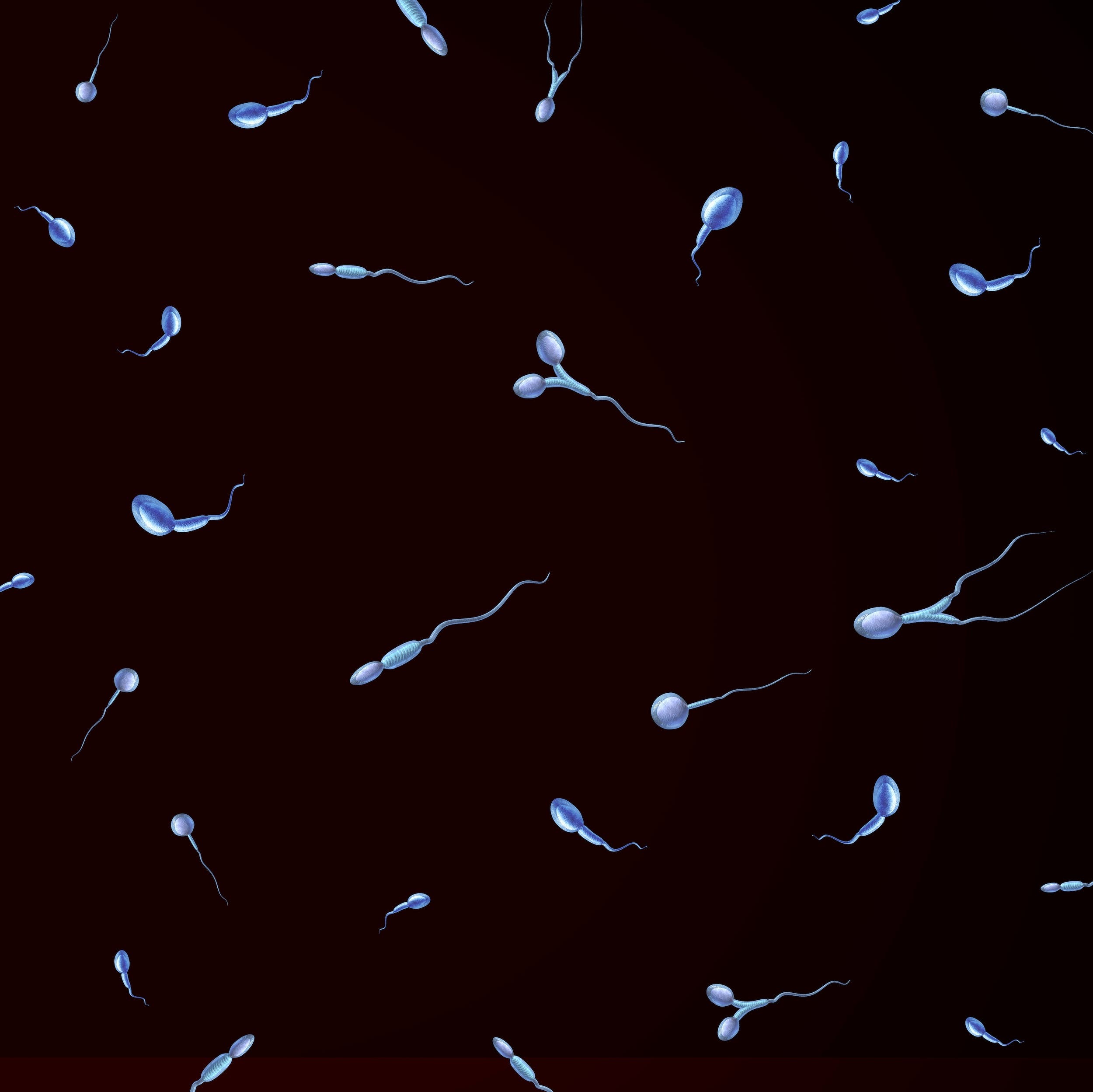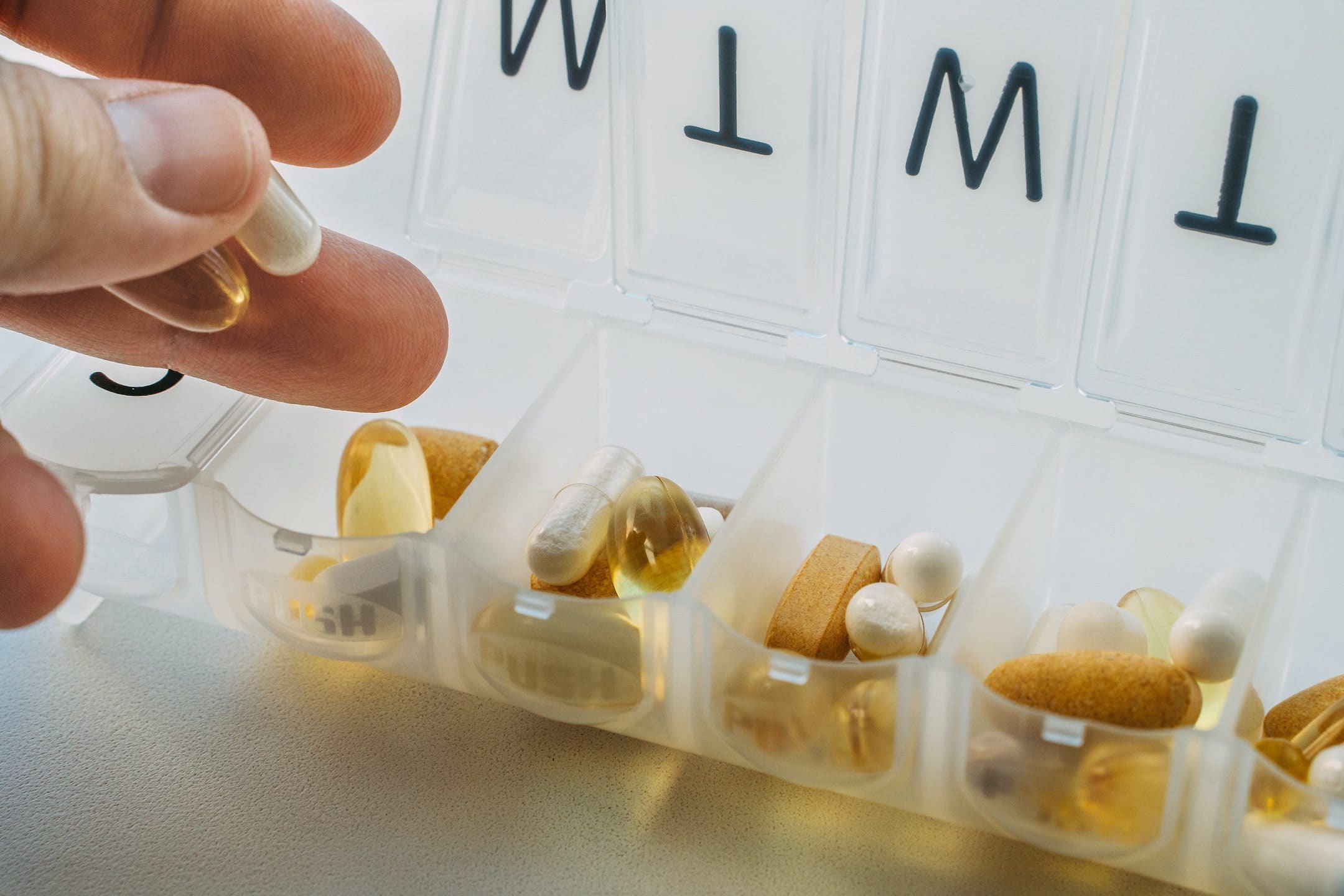Several semen parameters are important for assessing fertility, from sperm count to motility (movement) to morphology (shape). While sperm count is relatively straightforward, what is normal sperm morphology? This area of a semen analysis involves assessing the size and shape of your sperm and determining whether you have a minimum standard percentage of normally shaped sperm in your semen.
We’ll take a look at how sperm morphology is measured, why it’s important, and how you can improve your sperm morphology to help you conceive a child.
Key takeaways
- Sperm morphology, which refers to the size and shape of your sperm, is a key component when assessing fertility.
- Abnormally shaped sperm may have a harder time reaching and fertilizing an egg. However, it’s still possible to achieve a pregnancy with poor sperm morphology and more research is needed in this area.
- Lifestyle factors impact sperm morphology, and adopting a healthier lifestyle may improve sperm morphology.
What is sperm morphology?
Sperm morphology refers to the size and shape of your sperm. Ideally, your sperm will have a normal form that will let it move through the reproductive tract and penetrate the egg effectively.
A normal form means:
- The sperm head should be an oval shape that is 5 to 6 μm long and 2.5 to 3.5 μm wide.1
- The midpiece or neck should be 4 to 5 μm long.
- The flagellum or tail should be about 50 μm long.
- The sperm should have a normal acrosome, a cap-like structure over the sperm head. The acrosome contains enzymes that help the sperm penetrate the egg.
Sperm with morphology issues may have a misshapen head, overly large head, two tails, or other defects.
Sperm morphology is one of the key components of sperm — along with sperm count, motility, and semen volume — that’s evaluated during a sperm analysis to help assess your fertility level.

Why sperm morphology is important
Sperm morphology is important because normally shaped sperm may have a better chance of reaching and fertilizing an egg. Sperm with abnormal morphology may also have other issues that affect fertility, like higher levels of sperm DNA fragmentation.
The effect of sperm morphology on fertility is still under debate. Having abnormal sperm morphology doesn’t necessarily mean you’re infertile.2
In fact, it may still be possible to conceive a child even with a high percentage of abnormally shaped sperm. A 2016 study found that even among people with 0% normal forms of sperm, 29.2% were able to conceive naturally without using in vitro fertilization (IVF).3 This suggests that sperm morphology on its own may not predict fertility.
How sperm morphology is measured
Sperm morphology is measured during a semen analysis. Morphology is evaluated by examining the semen sample with a microscope at x1000 magnification and determining the percentage of sperm with normal vs. abnormal forms on several different areas of the slide.
While some sperm abnormalities are easy to see, like no head, multiple heads, or the tail coiling around the head, others may rely on measuring the size and shape of sperm depending on the assessment criteria being used.
What is the normal range for sperm morphology?
According to the World Health Organization (WHO) criteria published in 2010, more than 4% of sperm in a semen sample should have normal forms. Some clinics use the older WHO cutoff from 1999, which looks for more than 14% normal forms.4
If you’re wondering, yes — that means up to a whopping 96% of your sperm are likely to be abnormally shaped! The normal sperm morphology range is low, and having a significant percentage of abnormally shaped sperm is considered standard.
Kruger strict criteria vs. WHO criteria
Sperm morphology can be evaluated using the Kruger strict criteria, which was included in the WHO’s most recent semen parameter assessment criteria from 2010, and older methods from the WHO assessment criteria published in 1999.4
The newer Kruger strict criteria is more restrictive, labeling sperm as abnormal if the head is the wrong size or if any other aspect of its appearance, width, or length differs from the standard. Under this method, at least 4% of sperm should have normal forms.
By contrast, the 2004 WHO criteria was more lenient, involving checking that the head, midpiece, and tail on each sperm appeared normal. As a result, the normal sperm morphology range started at 14% of sperm with normal forms.
A study from 2021 compared the two criteria across sperm samples from 691 men.4 It found that the two types of assessments yielded nearly the same results, with just two men (0.4%) having abnormal morphology based on the Kruger criteria but normal results using the older WHO criteria. The study concluded that the extra effort involved with the Kruger criteria may, therefore, be unnecessary.
What is teratozoospermia (low sperm morphology)?
Teratozoospermia, or teratospermia, occurs when more than 85% of sperm in the semen have abnormal forms.1 With 0% normal forms, you have severe teratozoospermia.3
The sperm may all have the same specific abnormality, called monomorphic teratozoospermia, or several kinds of abnormalities, called polymorphic teratozoospermia. There are two types of monomorphic teratozoospermia:
- Macrozoospermia, when sperm have a large or irregular head shape and multiple tails
- Globozoospermia, when the sperm have round instead of oval heads and no acrosome
Factors that impact sperm morphology
According to research, several lifestyle and health factors may affect sperm morphology.5 While more studies are needed, these factors can include:
- Smoking, with worse semen parameters among people who smoked over 10 cigarettes per day
- Drinking alcohol, especially at moderate to heavy levels
- Eating a Western-style diet
- Using cocaine and other drugs for several years
- Experiencing psychological stress, with higher stress levels associated with reduced normal sperm morphology
- Obesity
- Older age, with normal sperm morphology decreasing after age 40
Genetics can also cause abnormal sperm morphology. The genetic disorder globozoospermia causes sperm to have a round head without the acrosome, leading to infertility.
Get tips to optimize sperm health so you can achieve your parenthood dreams.
How to improve your sperm morphology
More studies need to be done on improving sperm morphology, but the following lifestyle changes may help:
- Quit smoking (if you smoke), reduce your alcohol intake, and avoid recreational drugs.
- Reach and maintain a healthy weight.
- Eat a diet rich in fruits, vegetables, and healthy fats.
- Lower your stress levels.
- Take male fertility supplements.
If you’re planning to start a family in the future, you may also consider freezing your sperm. This may help you preserve your sperm health and morphology, since semen parameters tend to decline with age.
Trying to conceive with low sperm morphology
It’s possible to conceive a child with low sperm morphology — in some cases, even if your sperm has 0% normal forms.
If you have low sperm morphology and are having trouble conceiving, assisted reproductive technology (ART), like intracytoplasmic sperm injection (ICSI), might help. This procedure, which goes one step beyond IVF, involves selecting a healthy sperm and injecting it directly into an egg to help achieve fertilization.
Test your sperm morphology using at-home semen analysis.
References
1. De Braekeleer et al, “Genetic aspects of monomorphic teratozoospermia: a review.” 2015.
2. Menkveld et al, “Measurement and significance of sperm morphology.” 2010.
5. Durairajanayagam, “Lifestyle causes of male infertility.” 2018.



